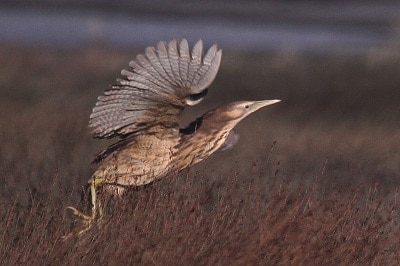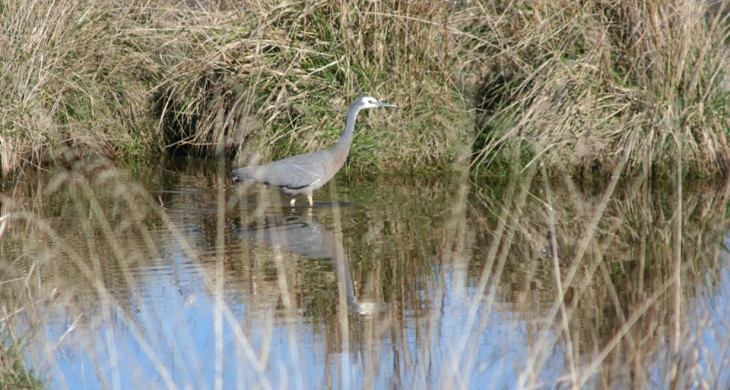Birdwatching haven
Te Waihora/Lake Ellesmere is the most diverse site in Aotearoa New Zealand for birdlife, with over 200 species (some of which are now extinct) recorded since records began.
 It is internationally renowned, providing habitat for many species including the nationally critical matuku-hūrepo/australasian bittern. The lake is a bird watcher's paradise as it supports a diverse mix of arctic waders and is a key site for a number of uncommon species such as the red-necked stint and the kuriri/pacific golden plover.
It is internationally renowned, providing habitat for many species including the nationally critical matuku-hūrepo/australasian bittern. The lake is a bird watcher's paradise as it supports a diverse mix of arctic waders and is a key site for a number of uncommon species such as the red-necked stint and the kuriri/pacific golden plover.
The lake environs are also an important habitat for native waders especially the poaka/pied stilt, tūturiwhatu/banded dotterel and ngutu pare/wrybill.
The most common group of birds found on the lake are waterfowl. The two most abundant species are kakī nui/black swans and tētē/grey teal. The lake's iconic kakī nui/black swans once numbered up to 80,000, but their numbers fell dramatically after the disappearance of the submerged weed beds around the lake margins in the late 1960s.
Since 2013, the Waihora Ellesmere Trust has coordinated a survey of the birds on the lake. This survey has shown swan numbers now average around 7,500 birds on the lake at any one time. annual survey of the birds on the lake. This survey has shown swan numbers now average around 7,500 birds on the lake at any one time.
Top spots for bird watching
Greenpark Sands
One of the top locations for bird watching is Greenpark Sands, which can be accessed from Embankment Road. This is where rare international migratory species can be seen.
Waitatari/Harts Creek
Across the western side of the lake, the bird hide on Waitatari/Harts Creek is a good place to spot elusive swamp birds and is just a 20-minute walk from the car park. To get there, follow the signs towards the Lakeside Domain on Timber Yard Road and follow the yellow signpost from the road marked “Bird Hide”.
Kaituna Lagoon
The Kaituna Lagoon, accessed from SH75, is a good viewpoint for waterfowl, and a place where kōtuku ngutupapa/royal spoonbills and pūteketeke/australasian crested grebes can often be seen. In winter you may be fortunate enough to see a kōtuku/white heron feeding in the shallows.
If you are birdwatching take care not to disturb the birds.
More species to watch out for
Find out more about some of the species you may spot on a good day’s bird watching. Many species are great at camouflage so you may have to spend time quietly observing to catch site of our rarer species.
- Kakī nui/black swan
- Tētē/grey teal
- Tataa/Australasian shoveler
- Kōau/black cormorant (shag)
- Pied cormorant (shag)
- Kōtuku ngutupapa/royal spoonbill
- Kōtuku/white heron
- Matuku-hūrepo/Australasian bitter
- Koitareke/marsh crake
- Pūweto/spotless Crake
- Poaka/pied stilt
- Banded dotterel
- Ngutu pare/Ngutu parore/Wrybill
- Red-necked stint
- Kohutapu/sharp-tailed sandpiper
- Kūriri/pacific golden plover
- Tara/caspian tern
- Pūteketeke/australasian crested grebe

